In a farm, the rooster has an extremely active life, from fertilizing the eggs, to mentaining the social order and chasing me like a crazy person whenever he’s in the mood for some action defending the chicken family from any potential predator and this active lifestyle must be sustained by a powerful muscular system. After the rooster meat is cooked, this muscular system (which is essential for the fulfilling daily attributions) often turns into a chewy, rubbery, uncomfortable, almost painful mess. To tenderize the meat and to make it juicy I pulled off some two simple and efficient tricks:
- Aging the meat. I learnt this trick from my grandmother. She used to wrap the rooster in parchment paper and refrigerate it for 2 – 4 days. And let me say, this trick really works. It is very important to wrap the meat in parchment paper, and not cling film, because the paper allows the meat to breathe.
- Slow-cooking the meat. I take the aged meat from the refrigerator about an hour before cooking and I let it get to room temperature. I pad dry it and I sear it, I deglaze the pan with wine, I cover the meat halfway with chicken broth and I slowcook it, covered, for about 1 hour, making sure I drizzle some juices from the pan every 15 minutes.
These two basic tricks allow me to get a tender and juicy steak each time. The taste is incredible, earthy, somehow buttery, with subtle notes of wine and sage. To conclude, if I didn’t manage to bust the “rooster is too rubbery” myth, at least I hope I made you curious!
Ingredients (for 2 servings):
- 2 legs (both drumstick and thigh) – preferable aged see above (1.)
- 2 Tbsp olive oil – 30ml
- ¼ cup dry white wine – 60ml
- 1 cup low sodium chicken broth – 240ml
- 6-8 sage leaves
- 6-8 peppercorns

Method:
- Heat 2 Tbsp olive oil in a medium skillet over medium heat. Pat dry the rooster legs and sear them, skin side down until brown (for 3-4 minutes). Brown them on the other side as well.
- Add the sage and cook it for about 30 seconds. Deglaze the skillet with wine and make sure to scrape down the browned bits that stick to the bottom.
- Add broth and peppercorns and cover with a lid. Reduce the temperature to low and braise for 1 hour, making sure you drizzle the juices from the pan over the rooster legs.
- After 1 hour the meat should be tender when pierced with a fork and the sauce should be thick and glossy. If the meat is tender but the sauce is watery, reduce it by boiling it uncovered for about 5 minutes, over high heat. If the sauce is too thick, loosen it up with 2-3 Tbsp of broth. Discard the peppercorns, cover the skillet with a lid and let the meat rest for 15 minutes.
- Serve the rooster legs with the delicious sauce from the pan and some crispy polenta slices.
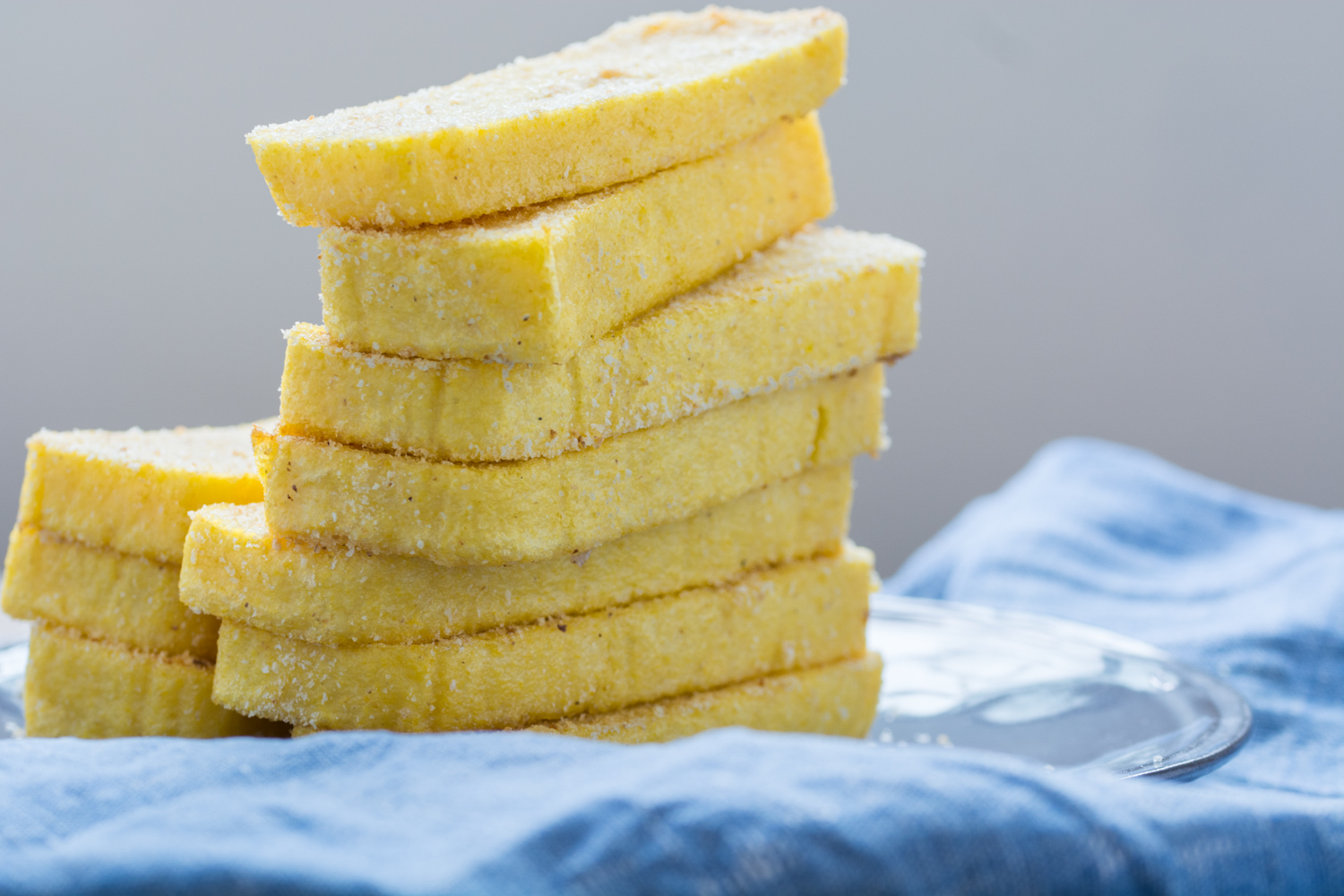


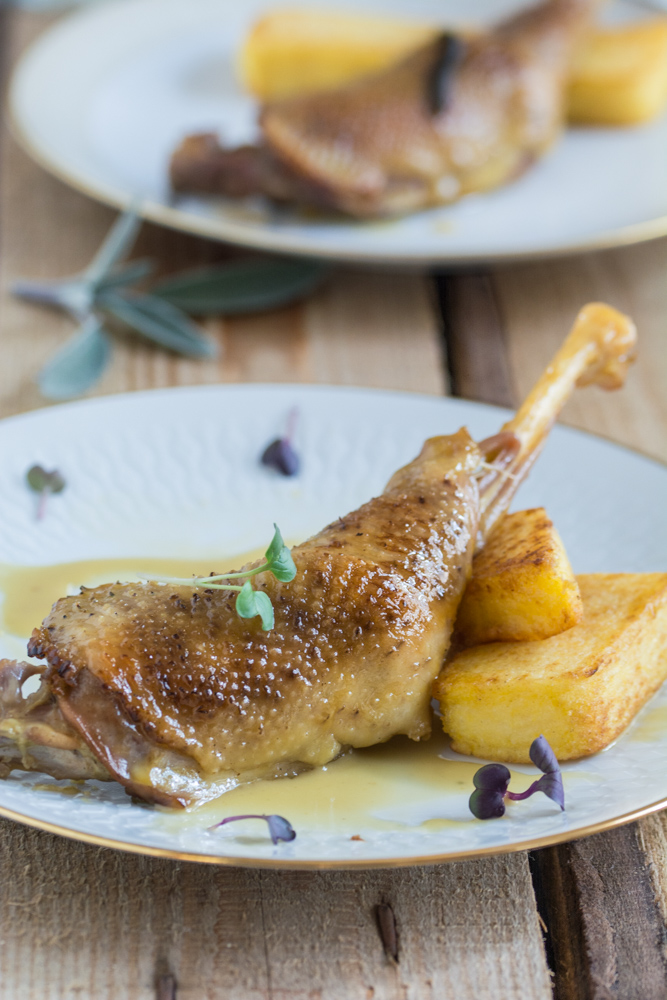


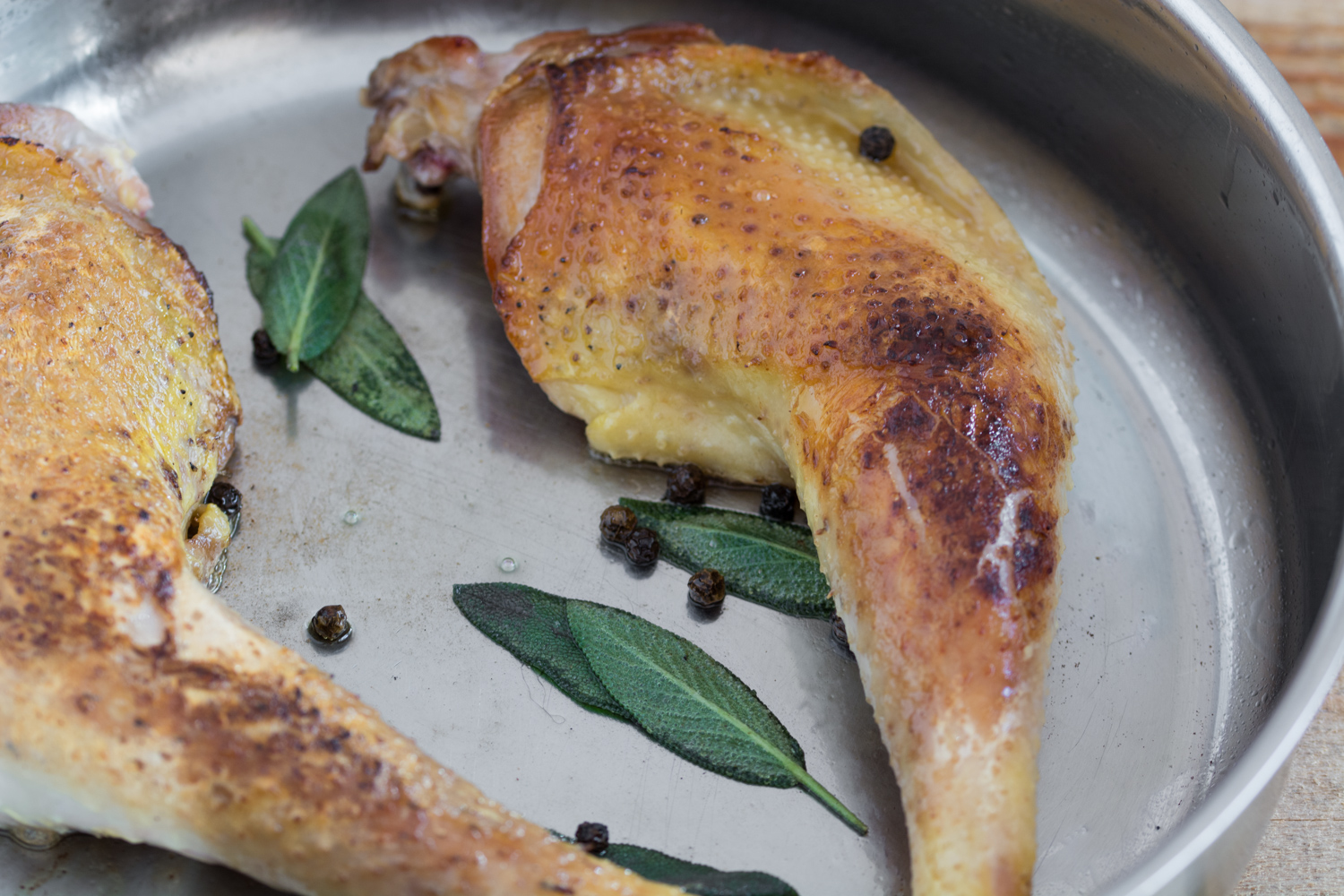
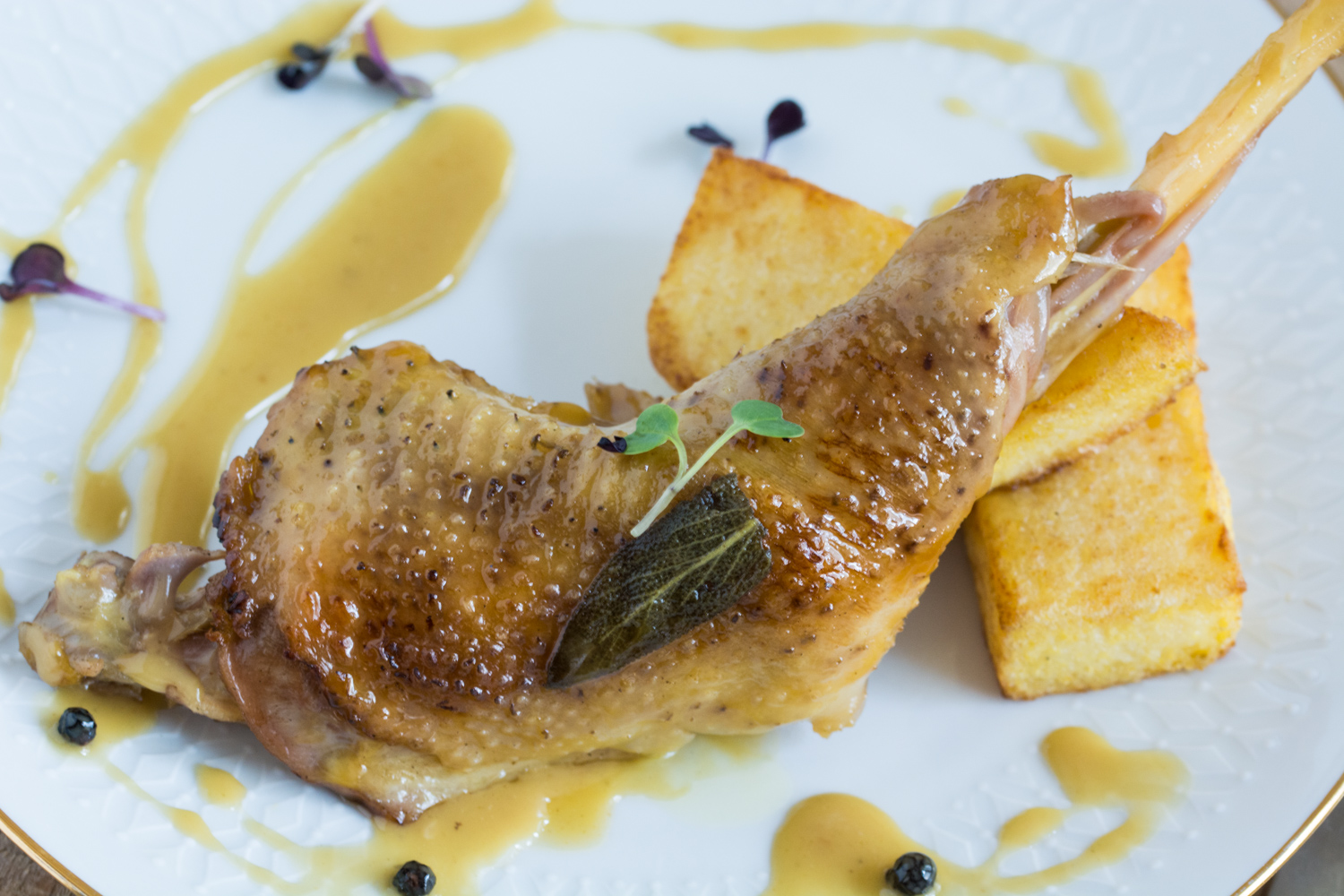
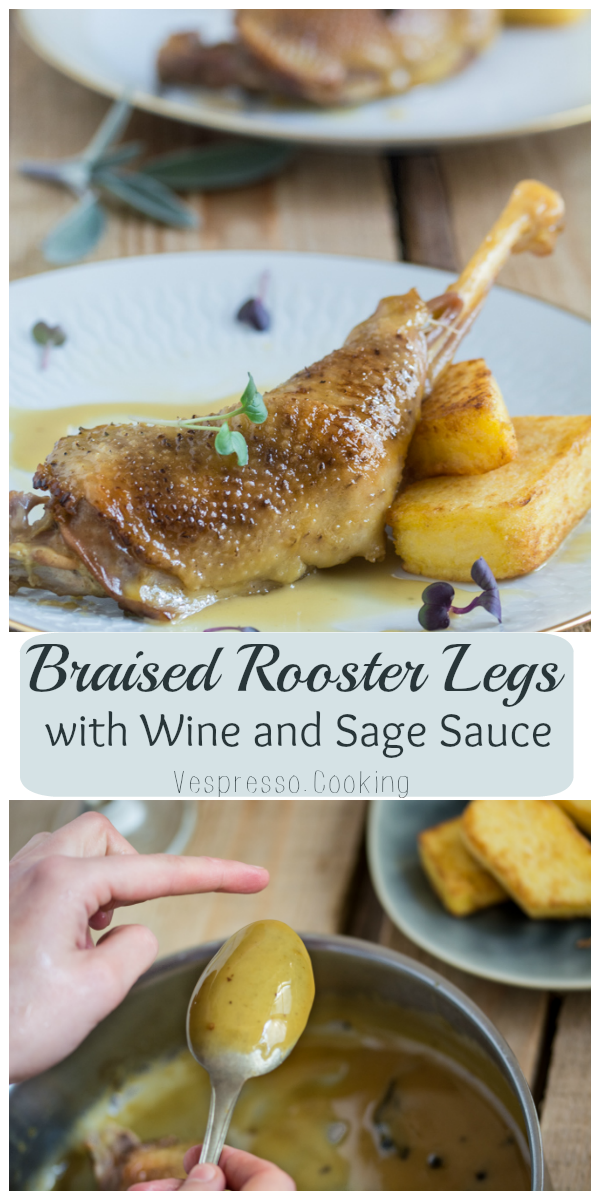


One thought on “Braised Rooster Legs with Wine and Sage Sauce”